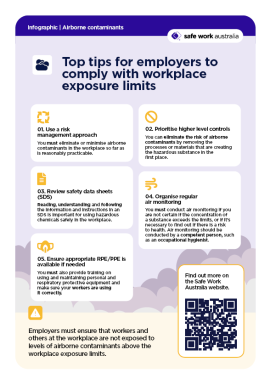
Downloads
Australia is transitioning to the Workplace exposure limits for airborne contaminants (WEL list). Until 1 December 2026, you must still comply with the Workplace exposure standards for airborne contaminants (WES list). Contact your work health and safety regulator for further information.
Infographic content:
Top tips for employers to comply with workplace exposure limits:
- Use a risk management approach
You must eliminate or minimise airborne contaminants in the workplace so far as is reasonably practicable. - Prioritise higher level controls
You can eliminate the risk of airborne contaminants by removing the processes or materials that are creating the hazardous substance in the first place. - Review safety data sheets (SDS)
Reading, understanding and following the information and instructions in an SDS is important for using hazardous chemicals safely in the workplace. - Organise regular air monitoring
You must conduct air monitoring if you are not certain if the concentration of a substance exceeds the limits, or if it’s necessary to find out if there is a risk to health. Air monitoring should be conducted by a competent person, such as an occupational hygienist. - Ensure appropriate RPE/PPE is available if needed
You must also provide training on using and maintaining personal and respiratory protective equipment and make sure your workers are using it correctly.
Employers must ensure that workers and others at the workplace are not exposed to levels of airborne contaminants above the workplace exposure limits.
Additional Resources:
Publication Date:
Last updated:
Publication type:
